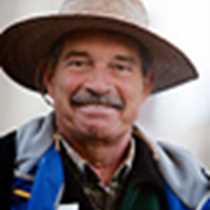Southeast Alaska
Rain. Yes, rain. A lot of it. Southeast Alaska is green, green. Thanks to the rain. In some places you may get more than 100 inches of rain a year, and rumors go that up in the higher mountains there are places where the annual precipitation is higher than 300 inches a year. And this lovely Southeast Alaska is called a rainforest, and the Sitka spruce and Western hemlocks reach fantastic sizes, up to 70 and 60 meters ( 220 ft and 190 ft), and the Alaska yellow cedar can attain ages of up to 1500 years. These are some of the trees we saw on this cool, wet day.
And at the time, we were sailing along an incredibly lovely fjord, considered by many to be one of the most beautiful fjords of the world. This fjord is called Tracy Arm, and has at its eastern head two glaciers, Sawyer and South Sawyer. Both are tidewater (meaning that they reach down to touch the ocean), producing a great amount of huge chunks of ice and monstruous amounts of pieces of all sizes (burgy bits and growlers) in a process called calving. Today we saw them, beautiful icebergs of blue ice!
All the while, we enjoyed harbor seals on the ice-flows, as well as a good number of birds flying among the floating ice, such as bald eagles, gulls, pigeon guillemots and even barn swallows, flying back and forth, eating small insects!Plants? Yes, we saw quite a few of them, along the sides of the fjord, at different altitudes, including Sitka alders, willows, goats beard, dwarf fireweed in bloom, as well as red paintbrush, coloring the rocks in scarlet shades. Exhilarating!
As we returned to the mouth of Tracy Arm, we turned into Williams Cove, where we anchored and soon were kayaking and hiking among the partly-disturbed dark, cool old-forest, serene in its magnitude.
This is Southeast Alaska, my friends, yes!
Rain. Yes, rain. A lot of it. Southeast Alaska is green, green. Thanks to the rain. In some places you may get more than 100 inches of rain a year, and rumors go that up in the higher mountains there are places where the annual precipitation is higher than 300 inches a year. And this lovely Southeast Alaska is called a rainforest, and the Sitka spruce and Western hemlocks reach fantastic sizes, up to 70 and 60 meters ( 220 ft and 190 ft), and the Alaska yellow cedar can attain ages of up to 1500 years. These are some of the trees we saw on this cool, wet day.
And at the time, we were sailing along an incredibly lovely fjord, considered by many to be one of the most beautiful fjords of the world. This fjord is called Tracy Arm, and has at its eastern head two glaciers, Sawyer and South Sawyer. Both are tidewater (meaning that they reach down to touch the ocean), producing a great amount of huge chunks of ice and monstruous amounts of pieces of all sizes (burgy bits and growlers) in a process called calving. Today we saw them, beautiful icebergs of blue ice!
All the while, we enjoyed harbor seals on the ice-flows, as well as a good number of birds flying among the floating ice, such as bald eagles, gulls, pigeon guillemots and even barn swallows, flying back and forth, eating small insects!Plants? Yes, we saw quite a few of them, along the sides of the fjord, at different altitudes, including Sitka alders, willows, goats beard, dwarf fireweed in bloom, as well as red paintbrush, coloring the rocks in scarlet shades. Exhilarating!
As we returned to the mouth of Tracy Arm, we turned into Williams Cove, where we anchored and soon were kayaking and hiking among the partly-disturbed dark, cool old-forest, serene in its magnitude.
This is Southeast Alaska, my friends, yes!




